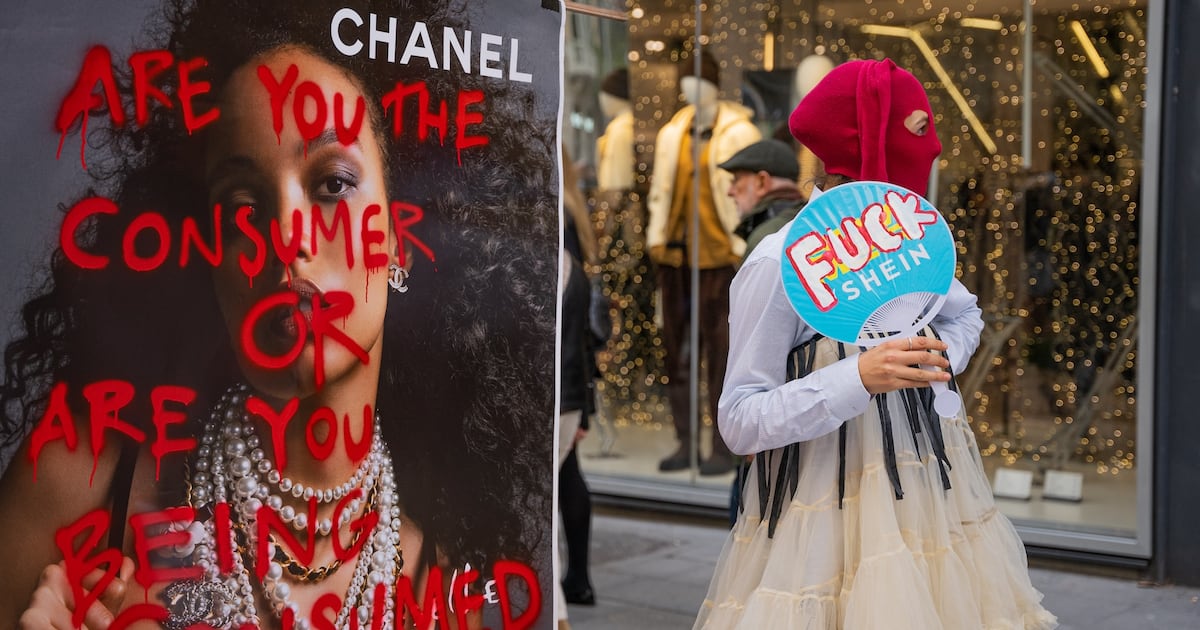
On Monday, the UN’s annual COP climate summit kicks off in Baku, Azerbaijan. The stakes for the global gathering of world leaders, business executives and activists are higher than ever.
This year was almost certainly the warmest on record. Alongside soaring temperatures, 2024 has been marked by vicious storms, with deadly and chaotic consequences. Global ambitions to cap any increase in temperature at no more than 1.5 degrees Celsius above pre-industrial levels look increasingly challenging; the world has already warmed by 1.3 degrees Celsius and without further action temperatures are on track to rise by nearly 3 degrees by the end of the century, according to a UN report published last month.
The fashion industry is lagging on its climate commitments, too. While some individual companies have started to make progress on reducing their planet-warming emissions, as a whole, the sector’s carbon footprint is on track to grow by more than 40 percent by 2030 as volumes grow, according to analysis by trade coalition Apparel Impact Institute.
With the world on a collision course to hit irreversible climate tipping points, here are some key questions for the industry to consider:
Is climate a priority for the fashion industry?
It’s not entirely clear.
While the number of fashion companies that have set heavily marketed climate commitments has increased significantly since the Paris Agreement (a global treaty to combat climate change) was signed in 2016, delivery on these goals has been patchy at best. Only Levi’s, Puma and H&M Group are currently on track to reduce their manufacturing emissions (where most of their environmental impact takes place) in line with global climate goals, according to an analysis by advocacy group Stand.earth published this year.
Businesses that made exuberant climate promises with little thought of how to deliver on them have already started to pull back. In fashion, companies including Asos and Crocs have already ditched or delayed targets after determining they either weren’t robust enough or weren’t realistic.
Meanwhile, a growing host of geopolitical and economic challenges are threatening the progress that has been made. This year’s downturn has put sustainability roles under pressure, with brands including Nike and Canada Goose restructuring their teams. An analysis of CEO surveys published by consultancy firm Bain & Co in September found sustainability is slipping down the priority list for corporate leaders. America’s re-election of Donald Trump, who has signalled he will withdraw the US from the Paris agreement, this week threatens to further complicate global efforts to tackle climate change.
On the other hand, state-level intervention is still expected in the US. Incoming regulation from Europe to California means the industry can’t keep treating environmental action as a convenient marketing tool. Among other things, new rules are set to make brands more responsible for what happens in their supply chains, impose higher taxes on products that are more polluting and mandate clothes contain a greater mix of lower-impact materials.
Big players in the industry are still pushing for change, too. The CEOs of H&M Group and Zara-owner Inditex were among the signatories of an open letter sent ahead of COP 29 pushing governments to set clear targets and policies to help the business case for green investments.
What are fashion’s climate risks?
For business, making climate a priority isn’t just about being a good corporate citizen or appealing to eco-conscious consumers; it’s about risk management. But even as extreme weather is becoming more frequent and more deadly, few fashion companies have quantified how climate change will affect their businesses.
It’s increasingly clear the impact will be severe. Unusual weather patterns mean unexpected consumer behaviour, making it harder to manage inventory and seasonal styles. Drought and flooding threaten supply chains for raw materials like cotton and leather and soaring temperatures mean lower manufacturing productivity and worsening worker health.
As temperatures hit record highs across manufacturing hubs in Asia this year, labour groups said they received increased reports of illnesses associated with heat and dehydration. Machinery stopped working and processes that relied on climate control couldn’t run. According to a study published last year, extreme heat and flooding could wipe tens of billions of dollars from garment sector earnings and significantly dent brands’ operating profits by 2030.
Where is the money to pay for a greener fashion sector?
Tackling fashion’s planet-warming emissions will cost an estimated $1 trillion, but few brands have laid out how they plan to fund their climate goals.
Finance is going to be a central issue at COP this year because no one is putting up enough of it.
It’s a complex issue for the fashion sector. The gloomy economic climate has made it tricky to find funds for sustainability projects that often take a long time to pay back and have intangible returns. The bulk of most brands emissions take place deep in their supply chains in factories they don’t own. Suppliers for their part are operating on ultra-thin margins and argue they should not have to bear all the burden to clean up a problem big brands have effectively outsourced to them, while continuing to extract the bulk of profits in the industry.
Some brands and industry groups have started to explore new funding mechanisms that could help manufacturers access cheaper loans or support farmers through the purchase of carbon or nature credits. But these efforts have delivered more of a trickle than the flood of funding required. More than anything, suppliers say they would benefit from long-term sourcing commitments that would reduce the risks associated with big investments. Instead, the rise of ultra-fast-fashion and the sluggish economy are encouraging the industry to become even more short term.




